Find out why this rubber egg or bouncy egg experiment is a classic must-try science activity you can set up in minutes in the classroom or at home! How can you make an egg bounce? What happens to the shell? Does light pass through it? So many questions and one easy experiment using everyday supplies. We think all science experiments should be this exciting, easy, and fun!
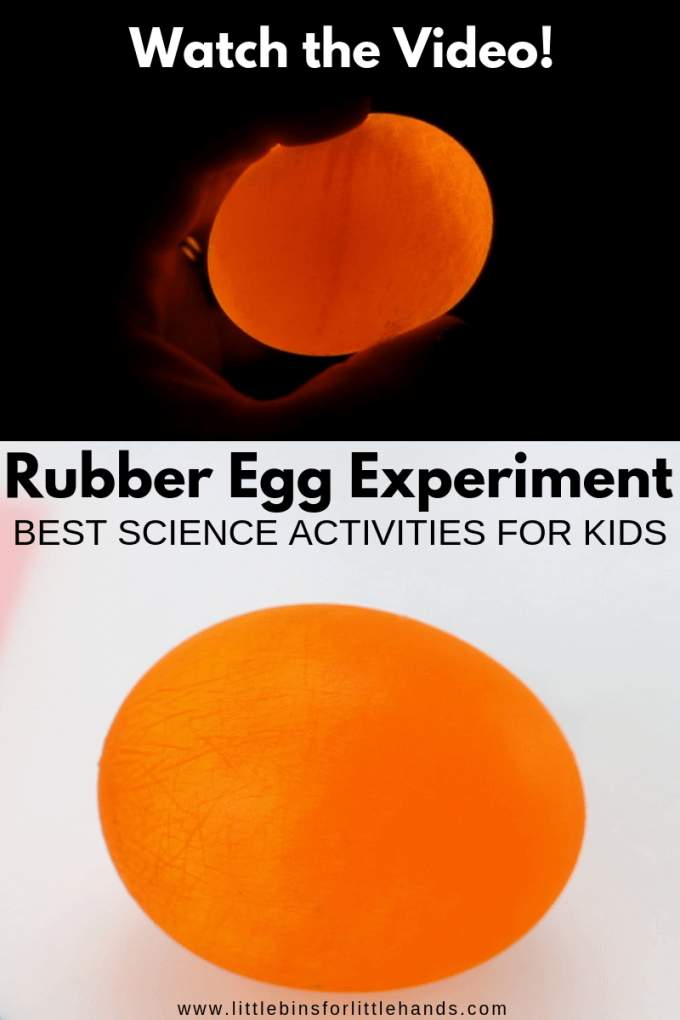
Try this fun rubber egg experiment!
Get ready to add this simple egg-in-vinegar experiment to your science lesson plans this season. Let’s dig in if you want to learn about a cool chemical reaction! While you’re at it, make sure to check out these fun chemistry experiments.
Did you know that a rubber egg also explores concepts from biology, including osmosis? Read on to learn more about how osmosis works. Plus, you can explore our potato osmosis lab as well.
There are so many interesting egg experiments and STEM projects! This classic naked egg experiment is very cool and easy to set up. The only difficult part is waiting! A whole week is what you need to wait.
After you set up your naked egg experiment, why not try…
- Take egg drop STEM challenge
- See if you can make an egg float
- Test the strength of the shell
- Make a crystal eggshell
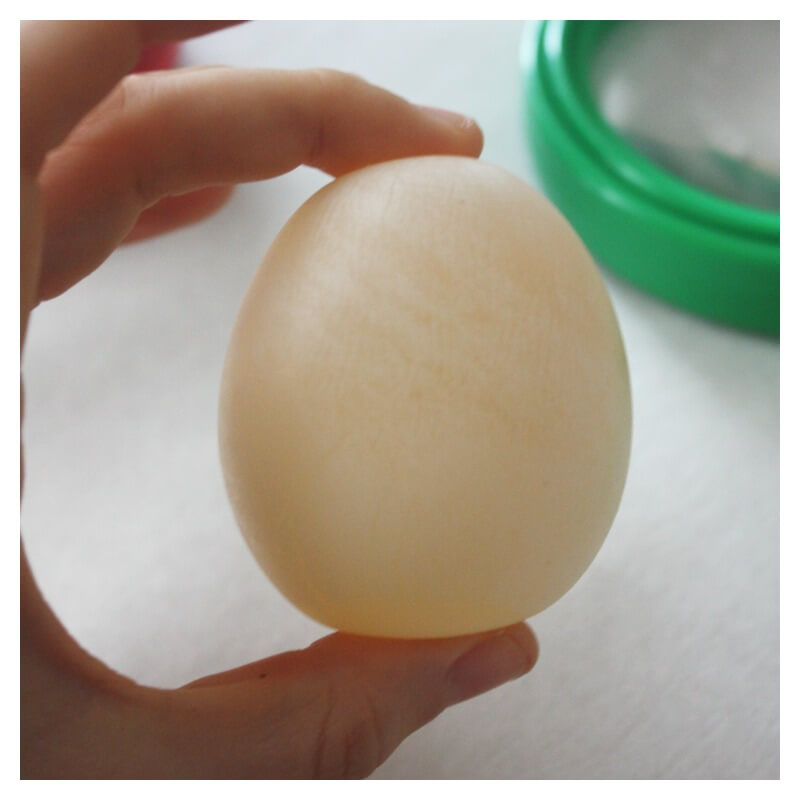
Turn It Into An Bouncy Egg Science Project
For younger kids, this basic version below is perfect! It includes the right amount of play and learning. For older kids, apply the scientific method by using variables. For example…
- Eggs – Are there differences in eggshells between brown and white eggs? How about organic eggs versus regular eggs?
- Liquid – What happens when you put the rubber egg back in vinegar or another liquid? How about corn syrup? Test different liquids and explore osmosis once the shell is dissolved!
Want to turn this fun science experiment into a science project? Then check out these helpful resources.
How Does This Egg Experiment Work?
Eggshells get their hardness from a mineral called calcium carbonate similar to our bones. When you place the egg into the vinegar, you will observe bubbles.
These bubbles are a chemical change happening because of the chemical reaction between the acid in the vinegar and the base in the calcium carbonate of the eggshell.
When an acid and a base mix, they form carbon dioxide, a gas. Learn more about acids and bases.
Try our seashells in vinegar experiment for another variation of this chemistry lesson.
The eggshell breaks down, leaving a soft, bendable, squeeze-able, rubber egg. Does it bounce? Kids can gently squeeze the egg and bounce the egg. However, be prepared for the eggs to burst! It’s also fun to take a flashlight to the egg and observe what you can see!
How does osmosis work?
You may have noticed that the egg gets larger as the shell disappears. The process of osmosis is the reason the inside of the egg increases in its size!
Osmosis is the movement of water through a semi-permeable cell membrane. The water from the vinegar moved inside the egg because of the tiny holes in the membrane.
However, the holes are not big enough to allow the egg to come out, so now the egg and water are inside the cell membrane together! The cell membrane is called semi-permeable because only some materials can pass through. Learn more about osmosis here!
Egg In Vinegar Experiment
This experiment is quick to set up but will need to be left for 48 to 72 hours to completely dissolve the shell, and get your bouncy egg!
Supplies:
- Raw Eggs
- Household Vinegar
- Jar or a Vase
Set Up:
STEP 1: Place an egg in the jar and cover with vinegar.
Optional: You can color the vinegar with food coloring for rainbow-colored rubber eggs too!
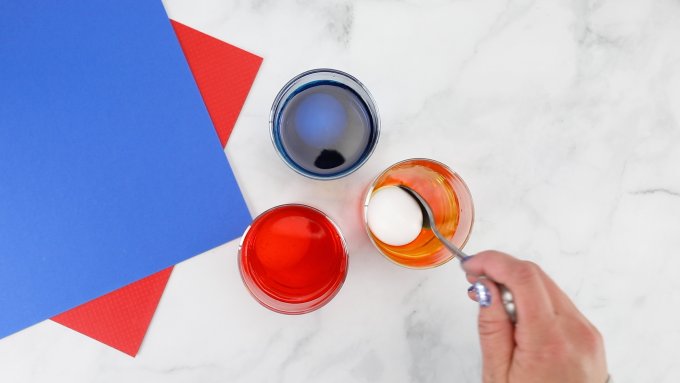
STEP 2: Wait and watch!
Notice the bubbles on the eggshell! The acid in the vinegar reacts with the calcium carbonate in the shell. This reaction produces a gas called carbon dioxide!
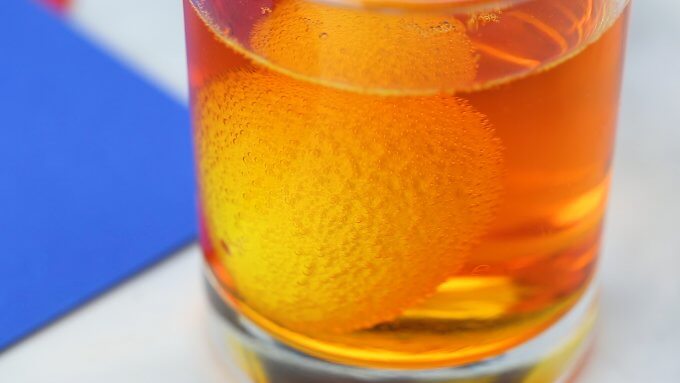
STEP 3: After 48 hours, remove the egg and rinse it off. Ours had a layer of brown scum that was easily washed away!
The hard outer shell is gone and the egg white and yolk are surrounded by a thin membrane.
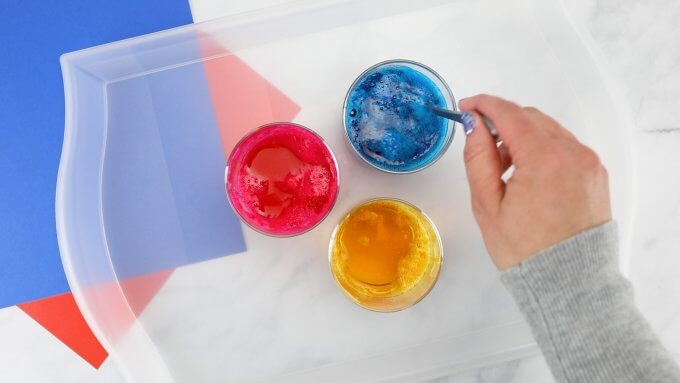
FREE Printable Science Activities Calendar
Fun Things To Do With Your Rubber Egg
Now for the fun part, exploring the naked egg with your child! We gathered a few supplies such as a magnifying glass and a large flashlight. However, first, we talked about what our naked egg felt and looked like. We had made a cool rubbery feeling egg!
TIP: Help your child learn to explore by asking questions to spark curiosity!
What does the egg feel like? What color is it? Is it hard or soft? Does it feel squishy?
All of these questions encourage exploration and hands-on learning. Have kids use their senses to observe! What does it smell like? What does it look like? There are so many ways to explore. Grab the magnifying glass too!
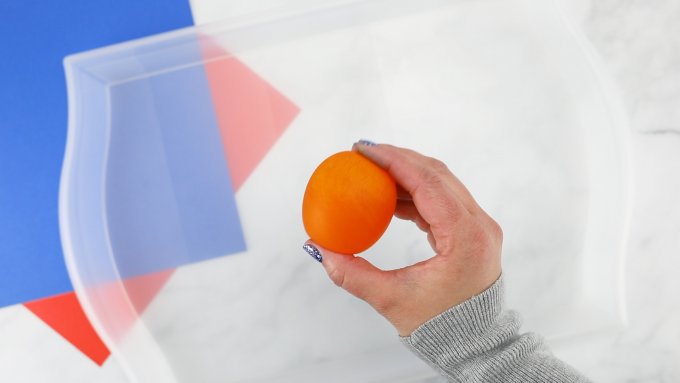
Can an egg bounce?
Yes!! How high can an egg bounce?
TEST IT: How high can your egg bounce before it breaks? Watch out! This might get messy!
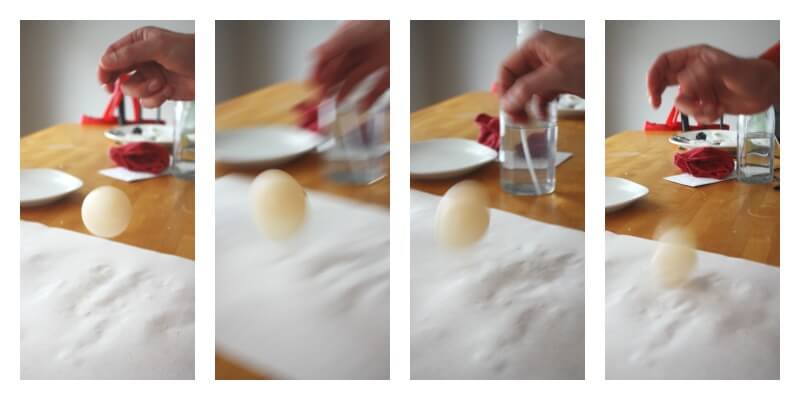
Can you see through an egg?
In general, you can’t see through a raw egg but what about a rubber egg? What happens when you put the naked egg up to a flashlight?
TEST IT: You can see through it! You can even see the yolk rolling around inside. Why is this? Because the hard outer shell is no longer there, you can see through the membrane of the egg.

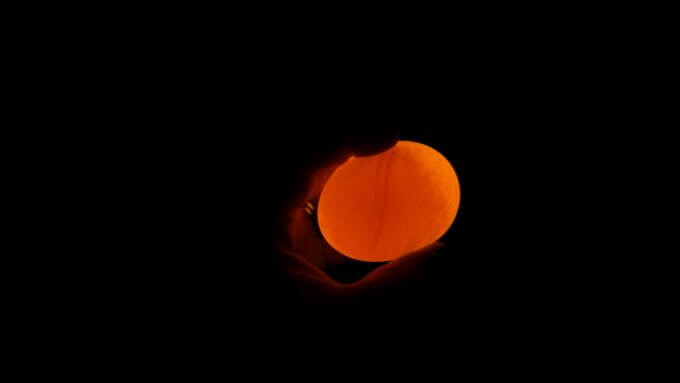
Will a rubber egg eventually burst?
Of course, we were prompted to wonder what would happen if you burst the naked egg. WOW! With a quick prick from a skewer, the egg burst! We were all quite surprised. The images below show what the naked egg looked like afterward.
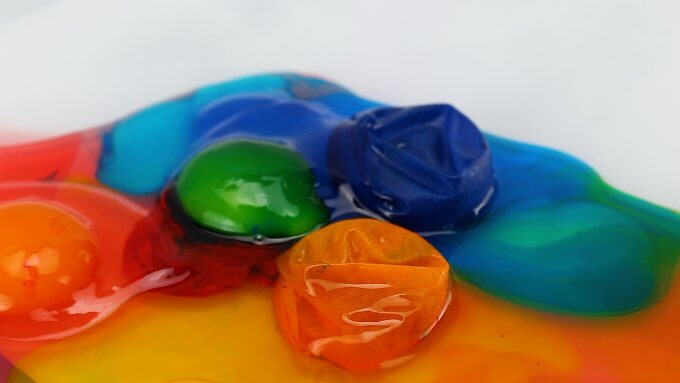
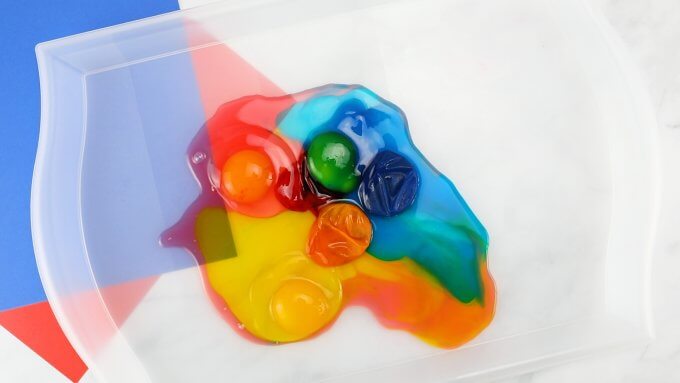
Tips For Setting Up Science Experiments For Kids
Science learning starts early; you can be a part of that by setting up science at home with everyday materials. Or you can bring easy science experiments to a group of kids in the classroom!
We find a ton of value in cheap science activities and experiments. All our science experiments use inexpensive, everyday materials you can find at home or from your local dollar store.
We even have a whole list of kitchen science experiments using basic supplies you will have in your kitchen. Check out our mega science supply list here to build your supplies kit!
You can set up your science experiments as an activity focusing on exploration and discovery. Make sure to ask kids questions at each step, discuss what is happening, and discuss the science behind it.
Alternatively, you can introduce the scientific method to older kids to record their observations and make conclusions. Read more about the scientific method for kids to help you get started.
More Fun Science Experiments To Try
- Take egg drop STEM challenge
- See if you can make an egg float
- Test the strength of the shell
- Make a crystal eggshell.
- Set up a potato osmosis lab.
- Dissolve a seashell!
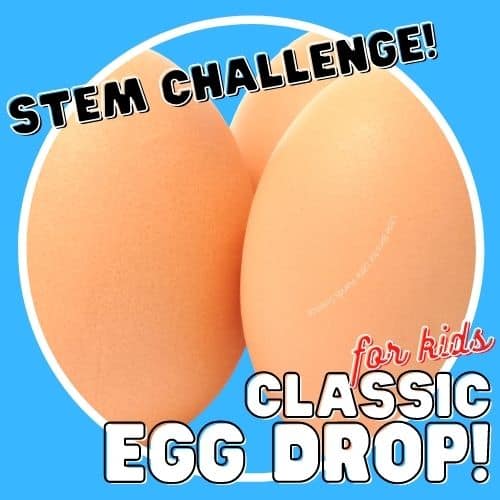

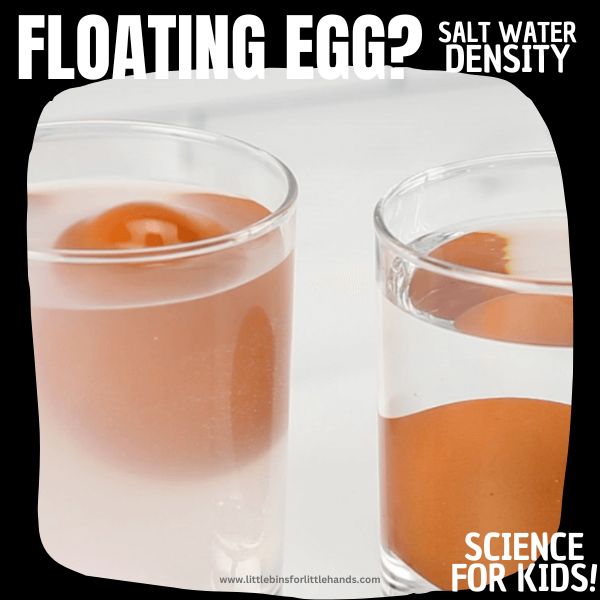
Printable Science Projects Pack
If you’re looking to grab all of our printable science projects in one convenient place plus exclusive worksheets and bonuses like a STEAM Project pack, our Science Project Pack is what you need! Over 300+ Pages!
- 90+ classic science activities with journal pages, supply lists, set up and process, and science information. NEW! Activity-specific observation pages!
- Best science practices posters and our original science method process folders for extra alternatives!
- Be a Collector activities pack introduces kids to the world of making collections through the eyes of a scientist. What will they collect first?
- Know the Words Science vocabulary pack includes flashcards, crosswords, and word searches that illuminate keywords in the experiments!
- My science journal writing prompts explore what it means to be a scientist!!
- Bonus STEAM Project Pack: Art meets science with doable projects!
- Bonus Quick Grab Packs for Biology, Earth Science, Chemistry, and Physics
- Science Fair Project Pack with experiments to try!


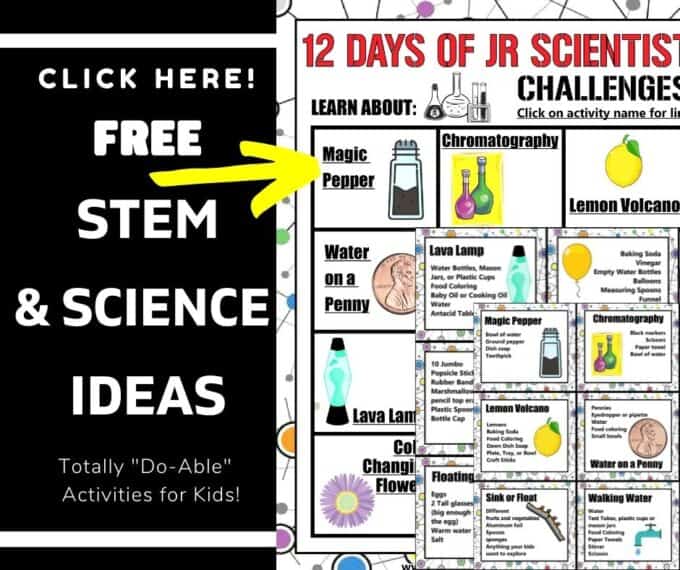







AMAZING!
my my bursted my rubberr egg im very upset
is this a fair test?
too many pages to print out….not easy to be able to do .keeps saying click below but get the cards on hypothesisi…dont want that
This is an awesome activity.
This was amazing! in the end it turned out great! my sister popped it tho :c